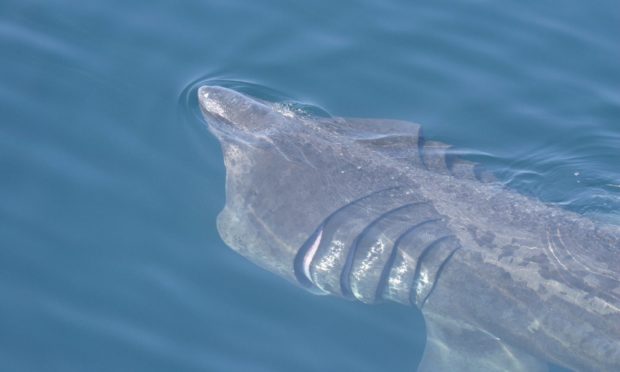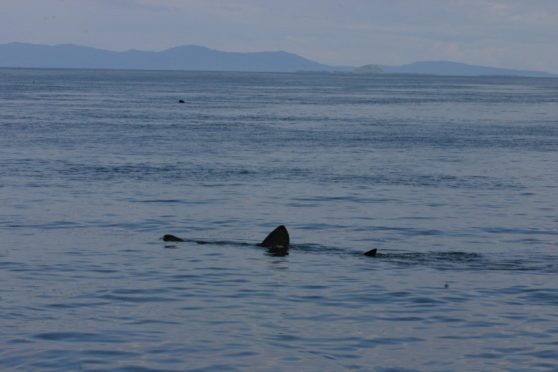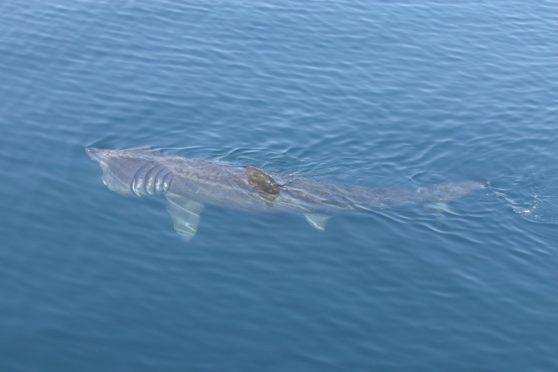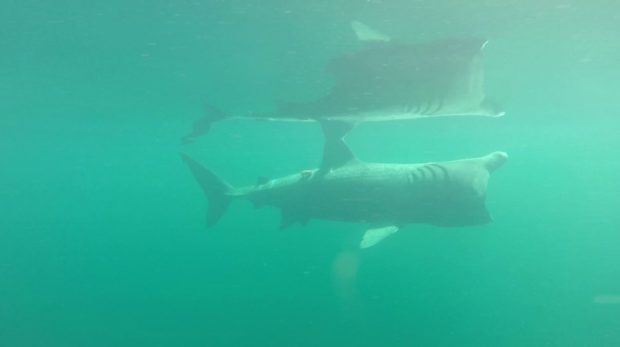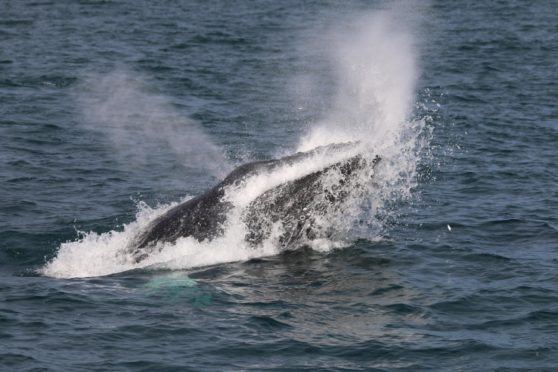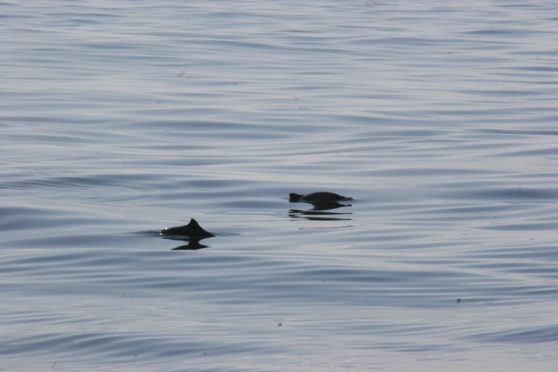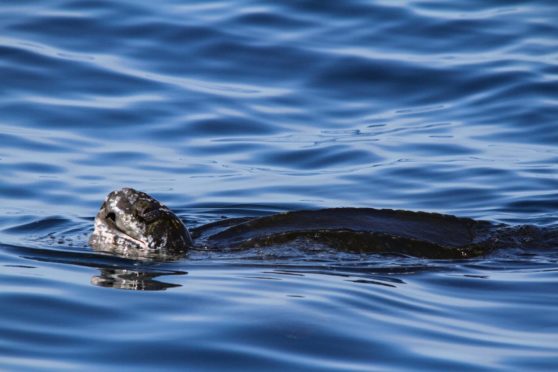A basking shark has been spotted in Scottish waters for the first time this year.
The lone shark was seen in the Hebrides near to Canna and was reported to the Hebridean Whale and Dolphin Trust (HWDT).
It was spotted by Canna Lighthouse technician William Beedie and is the first sighting in Scottish waters this year.
Basking sharks have already been spotted off Ireland and England, and they will be a more common sight on the west coast in the coming months.
Pippa Garrard, education manager at HWDT, explained that the basking sharks are one of the most commonly seen marine megafauna in Scotland.
She said: “Generally we receive 150 to 200 sightings of basking sharks per year and they are within the top 5 species reported and these mostly come from the public from ferries and on boats.
“We tend to have one or two sightings of basking sharks a year in April, that is when our first shark will turn up, so it is quite early as we usually see them in the last week of April but it’s not too unusual.
“It’s usually just one individual as well, sightings will start to increase through May, and the busy peak season is between July and September.
“We once recorded more than 50 sharks in a day which was incredible from our research vessel on the west coast near Tiree and Coll back in 2019.
“They don’t come up to the surface to breathe so you can easily tell them apart from whales and dolphins, they can just swim along at the surface for long periods of time, which makes it great for people to be able to spot them and they have these huge triangular fins that you can see out of the water.
“We call them gentle giants.”
What is a basking shark?
A basking shark is the second largest fish in the world and live for up to 50 years.
They are also up to 8m long and come up to Scotland to feed on plankton.
Basking sharks swim with their mouths open to take in water and plankton which filters out their gills.
They can eat 25kg of plankton an hour.
Community sightings
The HWDT is a marine conservation charity that maintain a community sightings datasbase of more than 28,000 marine mammal and megafauna sightings for the west coast of Scotland dating back to 1992.
They receive between 3,000 and 6,000 sightings a year from the public and wildlife watching operators and businesses.
They have an app called Whale Track that you can use to record sightings on-the-go, with a community of more than 2,000 people.
Marine life
Ms Garrard revealed that the top five most-seen marine mammals were:
- Harbour porpoise (all year around)
- Minke whale (April – October, first sighting reported to us this year on the March 15)
- Bottlenose dolphin (all year around)
- Common dolphin (sightings peak May to October)
- Basking shark (April/May to October, with sightings peaking July-Sept)
She added: “For us, some of the lesser seen marine life include the humpback whale, there was a nice sighting recently when two of them were seen off Coll feeding and the community reported them and the same whale was recently seen on the East Coast and he has been nicknamed Barney.
“We are learning more about them due to community sightings, there all kinds of things that pop up from time-to-time.
“We have had fin whales reported about once a year, and every now and then we get a leatherback turtle reported, which is fantastic as these kinds of things are things where you just need to be there at the right time and record it.”
The HWDT is encouraging people to send them in images or reports of marine sightings when they visit the coast or take ferries.
